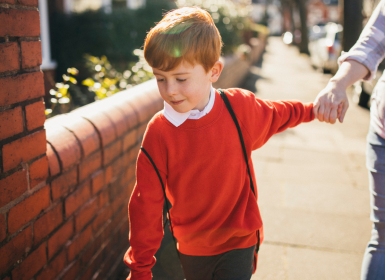
Strategies for promoting resilience in the classroom are high on the agenda for many schools at the moment, due to the disruptions that students have faced and the increasing need to support mental health outcomes and wellbeing.
Children need support, strong relationships, and positive role models in all areas of their life, so promoting resilience in the classroom is a crucial element in the partnership that teachers and schools build with students and their families.
What is Resilience?
Resilience is the ability to cope with life’s challenges. It allows an individual to not just bounce back from negative experiences or disappointments, but to also reflect, adapt, learn and grow from them. Being resilient means you’re more likely to accept your failures, as well as your successes, look to the future with optimism and have a strong sense of self.
In children and adolescents, the some of the main attributes of resilience are:
- Fewer behavioural issues
- Good social competencies
- Strong attachments to family, school and learning
- Effective coping mechanisms
- Better problem-solving skills
- The capacity and motivation to make realistic plans
- A positive view of yourself and confidence in your strengths and abilities.
Many consider resilience to be the antidote to mental health issues, particularly in young people.
Strategies for Schools to Teach Resilience
The best way to promote resilience in schools is to foster positive relationships with and between your students, while modelling and teaching some simple social and emotional skills.
Children who learn to recognise, understand and describe their emotions and those of others, will be able to express themselves appropriately, manage negative feelings and better cope during stressful life events.
Build Relationships
Positive teacher/student relationships enhance student wellbeing. To promote resilience, it’s important that teachers create a classroom environment that centres around student engagement and success. This can be achieved by:
- Being a welcoming, non-judgemental, empathetic and respectful leader
- Setting clear expectations for behaviour and academic standards
- Ensuring consistent structure, routines and rules
- Demonstrating problem-solving, conflict management and prosocial skills
- Modelling appropriate social and emotional behaviours
- Encouraging students to participate in the learning process
- Providing opportunities for leadership and responsibility
Model a positive outlook
Modelling optimism (a glass-half-full approach) can encourage initiative, creativity and the achievement of goals. As a teacher, you should:
- Encourage activities where your students will experience success
- Praise intrinsic and extrinsic motivation behaviour
- Show how children have control over events (choices)
- Talk about the ‘good side’ of things
- Model being appreciative and grateful
- Ask about the day’s highlights
- Encourage shared experiences
- Discuss other people’s point of view
- Discuss accepting things that can’t be changed
Adopt a strengths-based approach
A key part of promoting resilience is a shift from a deficit-based approach (fixing problem behaviours or areas of learning) to a strengths-based approach, which focuses on each student’s strengths, interests and positive qualities. This means:
- Identifying student abilities
- Allowing students to participate, contribute and make their own choices
- Giving frequent and focused feedback
- Acknowledging achievements
- Providing opportunities for your students to be successful and help them to build confidence and improve self-efficacy
Support goals
Even as adults, working towards our goals can often feel overwhelming or impossible. It’s crucial that we make goals achievable for students to maintain motivation and encourage self-efficacy. A key element in this is also celebrating the journey as well as the final success.
Teach children to set reasonable goals and then to move toward them one step at a time. Moving toward that goal – even if it’s a tiny step – and receiving praise for the effort of doing so will focus a child on what he or she has accomplished rather than on what hasn’t been accomplished, and can help build the resilience to move forward in the face of challenges.
Break down large tasks or assignments into small, achievable goals for younger children, and for older children, acknowledge accomplishments on the way to larger goals
Support emotional awareness
You can promote resilience in your school by modelling good social and emotional behaviours yourself. Here are some simple dos and don’ts to be aware of.
Do:
- Ask how the child feels
- Listen to what they say
- Summarise what they say
- Avoid telling the child how they should feel
- Read stories and talk about the characters’ feelings
- Help the child recognise feelings in others
- Congratulate children for managing difficult situations
Don’t:
- Talk about your own feelings and troubles too much
- Dwell on child’s upsetting incidents
- Show too much interest in how the child feels
- Over-react to small incidents
- Be overly sympathetic
- Encourage avoidance
- Forget to pay attention to coping or brave behaviour
Manage negative feelings
As a teacher, it’s important to acknowledge negative emotions and remind students that ups and downs are normal. Students who are experiencing challenges need the problem supported, not solved. You can do this by:
- Noticing when a student is upset, asking what is wrong and listening to them
- Acknowledging their feelings, asking what they want to do and how you can help
- Prompting problem solving – helping them understand what the solution may be and what the actions are
- Staying calm yourself and assisting them to manage their behaviour
- Providing a safe space for students to ‘cool off’ if they are upset
- Using tools or activities to encourage them to reflect on the challenge and shift towards a positive mindset
Resources
There are a range of resources that schools and classrooms can access to guide strategies for promoting resilience.



